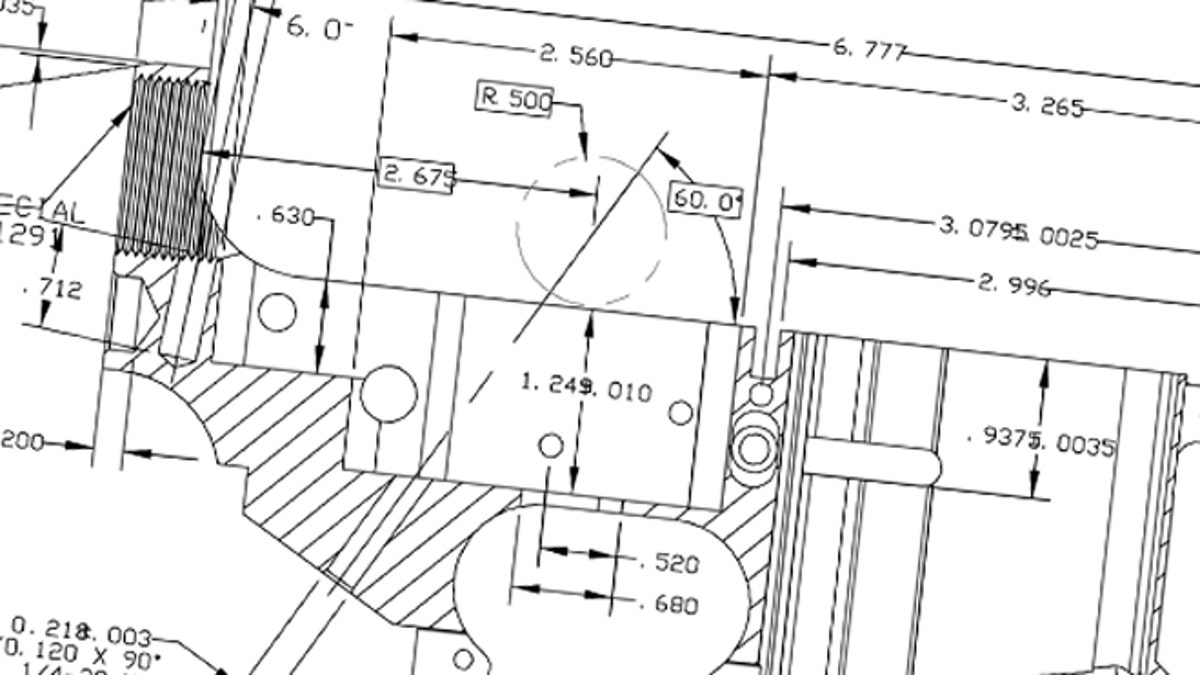
A portion of a downloadable blueprint that a 3D printer can use to build a gun.
Gun control, an already difficult task, just got even more difficult.
The 3D printing revolution is well under way. This wonderful new technology will allow small companies and even individuals to manufacture a wide range of items, such as medical devices that fit each individual’s unique size and shape.
However, it is increasingly obvious that guns and gun parts can be made, even including entire assault weapons.
Unfortunately, the initial regulatory proposals will likely increase crime. As usual, new technology is hard to stop, and the Department of Homeland Security last week declared: "Limiting access [to 3D-printing to make guns] may be impossible."
Until now the stumbling block has been to design a gun that would be sturdy enough, something that can withstand the explosion when a bullet is shot down the barrel. In other words, you don’t want the gun to go off like a grenade in your hands instead of hitting the target.
Cody Wilson, the 25-year old founder of Defense Distributed, created a ruckus when he announced his successful design of a plastic gun that would operate like a normal one.
Plastic guns can’t be detected by metal detectors and would pose an obvious danger. But the hype so far exceeds what is practical.
When police in Australia downloaded the blueprint and easily made two plastic guns with a 3D printer, one of the two guns suffered “catastrophic failure” on its first shot. The other fired one successful shot before failing. The conclusion of the report the police released on last Friday was obvious: you are taking your life into your own hands if you use the plastic version of these guns.
That said, plastic guns are really a side issue, for 3D printers are increasingly allowing for other materials, including metal. Really all that needs to be metal are the gun’s steel barrel and firing pin.
Wilson used a metal nail for the firing pin. 100,000 copies of the handgun blueprint from Wilson’s website were downloaded around the world in just 2 days, with most of downloads coming from Spain, followed by the US, Brazil, and Germany.
The heavy downloads in Spain, Brazil, and Germany likely reflects attempts to evade their extremely restrictive licensing on semi-automatic handguns.
The Obama administration quickly stopped Wilson from distributing the file by threatening legal action, but it was already too late.
Legal or not, it doesn’t really matter: just as we've seen with movies, file sharing is unstoppable.
According to Torrent Freak, just a single episode of HBO’s Game of Thrones in 2012 was illegally downloaded an estimated 4.3 million times.
As of last Friday, after Wilson had stopped distributing the file, his blueprint could be downloaded from over 4,000 computers all around the world.
This blueprint is now among the top 10% most downloaded bit torrent files. Politicians just don’t seem to understand the new technology.
Senator Chuck Schumer (D-N.Y.) and Rep. Steve Israel (D-N.Y.) and even the California state legislature are proposing to regulate 3D printing.
The proposal in California goes farthest and would treat 3D printers like guns, considering background checks, mandatory serial numbers, and even a registration process. But even if the government registered every printer, what is going to stop gangs from stealing these printers?
Would the government try to monitor what people do with legally owned printers?
Perhaps, in the end, people will need prior government permission for every item printed.
In any event, printers could soon be found everywhere.
Gartner, a company that specializes in evaluating technology research, predicts "by 2016, enterprise-class 3D printers will be available for under $2,000."
The cheapest 3D printers are already available for as little as $10,000. And what happens if we so thoroughly restrict access to printers?
Besides stifling technology generally, the issue has the same problem that's plaguing gun control: the most law-abiding citizens will be the ones obeying the law. Only criminals will get access to these inexpensively made guns, the Australian police made their guns for only $35 each.
This is a lesson Americans learned the hard way, for instance in Washington, D.C. and Chicago, where bans primarily disarmed law-abiding citizens and only increased violent crime.
Indeed, around the world, every time guns are banned, murder go up. Politicians must stop their wishful thinking. It is already exceedingly difficult to prevent criminals from getting their hands on guns. And technology is rapidly making gun control even more counterproductive.
